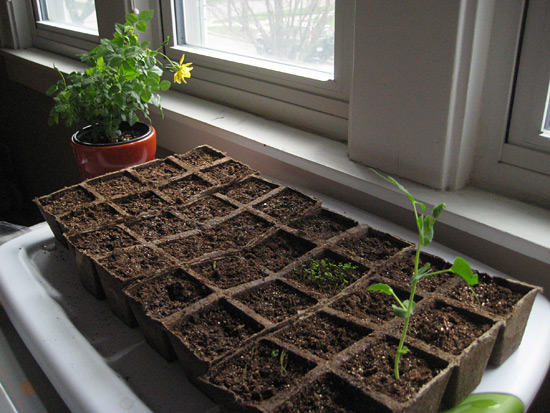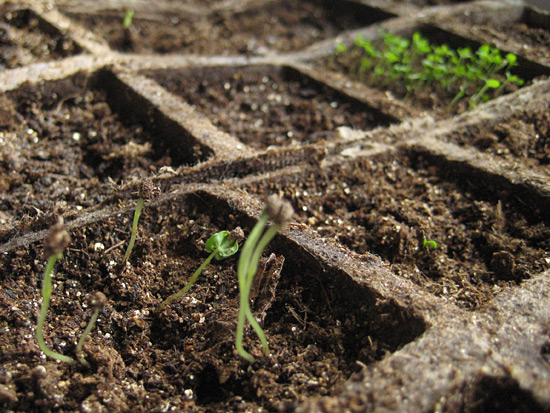Last year’s starting seeds experiment did not end well. Like I had hoped, I was able to keep up on regular watering of the seeds. I also noted seed-starting mix, because of its ingredients and light weight, is a more efficient medium than potting soil when growing plants from seed.
So where did the experiment go wrong? I feel the egg containers I converted into seed-starting trays were too shallow. When a seedling seemed large enough to transplant into a small container, I had a difficult time removing it from the egg tray. The seed-starting medium often fell away from the plant as I attempted to scoop it out with a tablespoon. I also wonder if the spoon did not damage the delicate roots.
Using Peat Pots to Start Seeds
However, I am stubborn and the urge to grow something is too strong in late winter to resist! This year, I switched up the variable of the potting container to be small peat pots to plant along with the seedling when it is ready.

Seeds for 2015 Growing Season
I have a TON of seeds to use up. When the soil is warm and the last front has passed, many will be directly sown into the soil of the Lot. However, I selected a handful to try starting early, indoors, with seed-starting mix, and peat pots. The vow to water the pots at least once a day was also taken.
Annuals
- Hyacinth Bean
- Black-eyed Susan Vine (Thunbergia alata)
- Canary Climber (Tropaelum peregrinum)
- Picotee Blue Morning Glory (Ipomoea purpurea)
- Cleome
- Moonflower
- Heliotrope Dwarf Marine
- Chocolate Flower
- Sensation Picotee Cosmo (Bipinnatus picotee)
Perennials
- Summer Nights Larkspur
- Black Barlow Columbine
- English Daisy (Bellis perennis)
- Butterfly Flower (Asclepias tuberosa)
- Malva Zebrina (Malva sylvestris zebrina)
- Prunella Pagoda (Prunella Grandiflora)
- Blanket Flower Burgundy (Gaillardia aristata)
- Penstemon
- Verbena Moss (Verbena tenuisecta)
- Peppermint Candy Columbine (Aquilegia vulgaris)
- Black-eyed Susan Irish Eyes (Rudbeckia hirta)
Vegetables
- Sugar Peas
- Bush Beans
- Persian Cucumber
They Arise
Two of the peat pot sets were planted on March 29th. The following two were planted on April 4th. There was no science or planning behind this decision. It was just the time I had available to plant the seeds. The tall seedling in the above photo is a sugar pea. The multiple green leaves are the English Daisies. However, yesterday is when I noticed the rest of the seeds breaking the surface. Here’s an up-close-and-personal shot.

It’s going to be fun watching the plants, noting how their grow patterns are similar and different. Hopefully I can successfully harden the plants off and have a smooth transplant outside onto the Lot. Then I’ll be able to compare these starters with the seeds direct sown into the soil.



